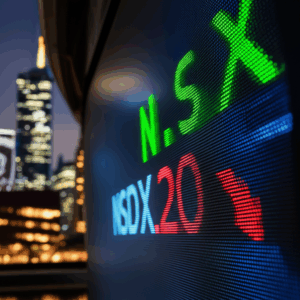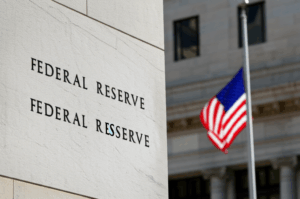S&P 500 Falls as Iran-Israel Conflict Continues, US Retail Sales Drop
Global financial markets witnessed a notable downturn this week, with the benchmark S&P 500 index experiencing a significant fall. This market contraction comes as investors grapple with a dual challenge: the escalating geopolitical tensions between Iran and Israel, and a surprising decline in U.S. retail sales figures. The confluence of these factors has created a climate of uncertainty, prompting a risk-off sentiment that reverberates across asset classes and leaves many questioning the immediate trajectory of the global economy. For young investors navigating today’s complex financial landscape, understanding these intertwined dynamics is crucial.
The geopolitical backdrop is undeniably a major driver of current market anxiety. The ongoing conflict between Iran and Israel, characterized by retaliatory strikes and an increasingly volatile rhetoric, has cast a long shadow over the Middle East. This region, a critical hub for global energy supplies and trade routes, holds immense sway over international markets. Any escalation of hostilities threatens to disrupt oil production and shipping lanes, leading to spikes in crude oil prices and increased costs for businesses globally. Investors, inherently risk-averse in times of heightened uncertainty, tend to reallocate capital from equities into safer assets like government bonds or gold. The fear isn’t just about direct conflict but also the potential for wider regional destabilization, which could have ripple effects on global supply chains and dampen consumer and business confidence worldwide. Energy stocks, paradoxically, might see some short-term gains due to rising oil prices, but the broader market tends to suffer from the overarching uncertainty and the potential for higher inflation stemming from increased energy costs.
Compounding these international concerns is a softening domestic economic picture in the United States. Recent data revealed a decline in U.S. retail sales, a pivotal indicator of consumer spending health. As the primary engine of the American economy, consumer expenditure accounts for roughly two-thirds of the nation’s Gross Domestic Product (GDP). A significant drop in retail sales suggests that consumers are either becoming more cautious with their discretionary spending or are feeling the cumulative effects of persistent inflation and higher interest rates. This slowdown could be attributed to several factors: the depletion of pandemic-era savings, the continued burden of elevated living costs, and the impact of the Federal Reserve’s aggressive monetary tightening cycle over the past year. While a cooling economy can be seen as a necessary step in the fight against inflation, a sharp deceleration raises concerns about a potential economic recession. Such fears often lead businesses to curb investment and hiring, further slowing growth.
The combined effect of these geopolitical pressures and domestic economic headwinds has directly impacted the S&P 500. A decline in the index signifies a broad-based retreat from risk assets, reflecting investor apprehension about corporate earnings and future economic growth. Companies reliant on consumer spending, such as those in the retail and discretionary sectors, are particularly vulnerable to a slowdown in sales. Similarly, any sector exposed to international trade or sensitive to energy price fluctuations feels the pinch of Middle East tensions. The market’s reaction also hints at evolving expectations for the Federal Reserve. While some might interpret weakening retail sales as a sign that inflation is indeed cooling, potentially paving the way for earlier interest rate cuts, others remain focused on the stickiness of core inflation and the Fed’s cautious stance. The market’s current volatility underscores the delicate balancing act central bankers face: taming inflation without inadvertently tipping the economy into a recession. As investors digest these complex signals, the focus will undoubtedly shift to upcoming economic data releases, corporate earnings reports, and any further developments in the Middle East, all of which will provide crucial clues for the market’s direction in the weeks and months ahead.





